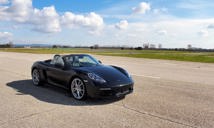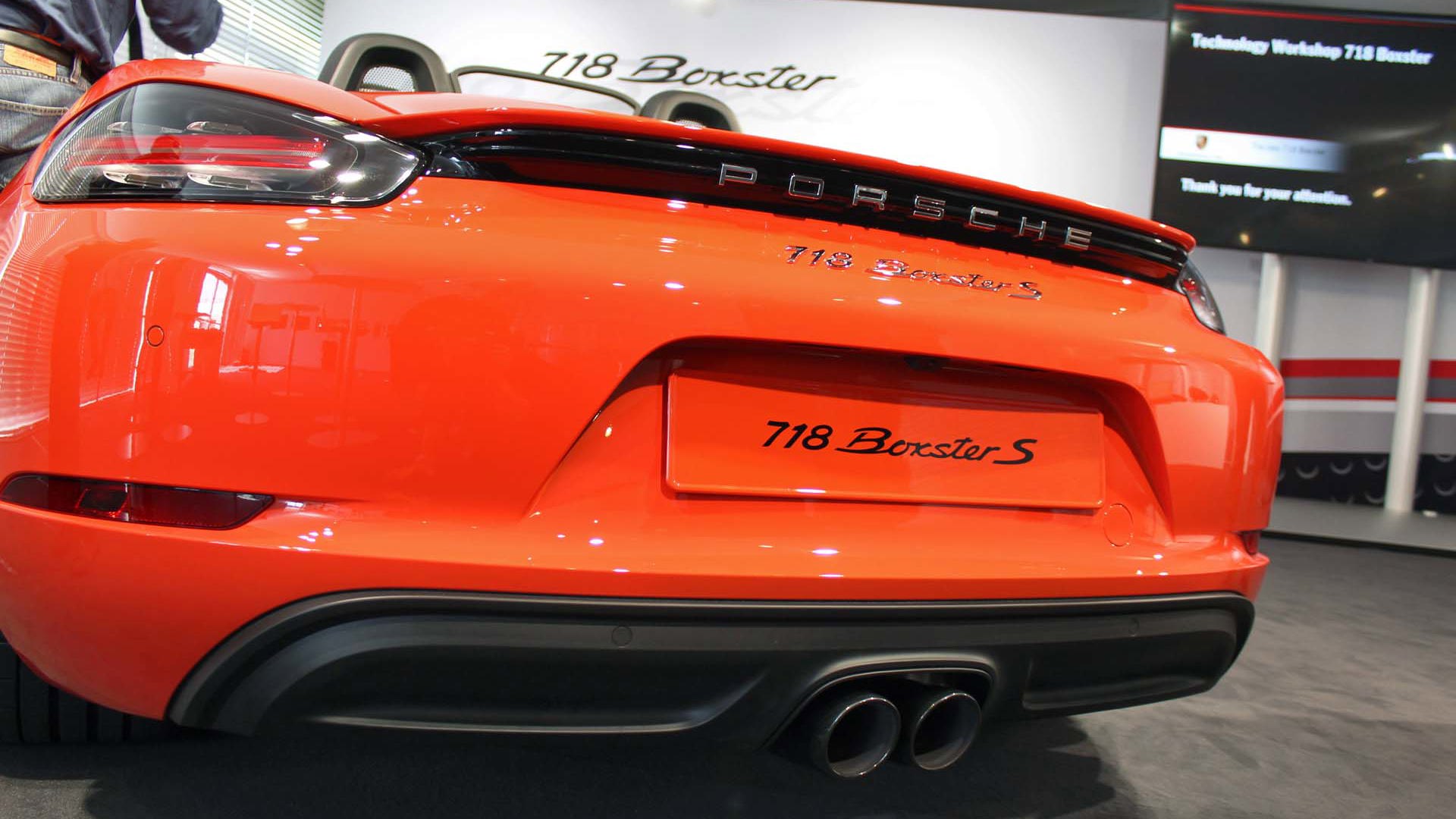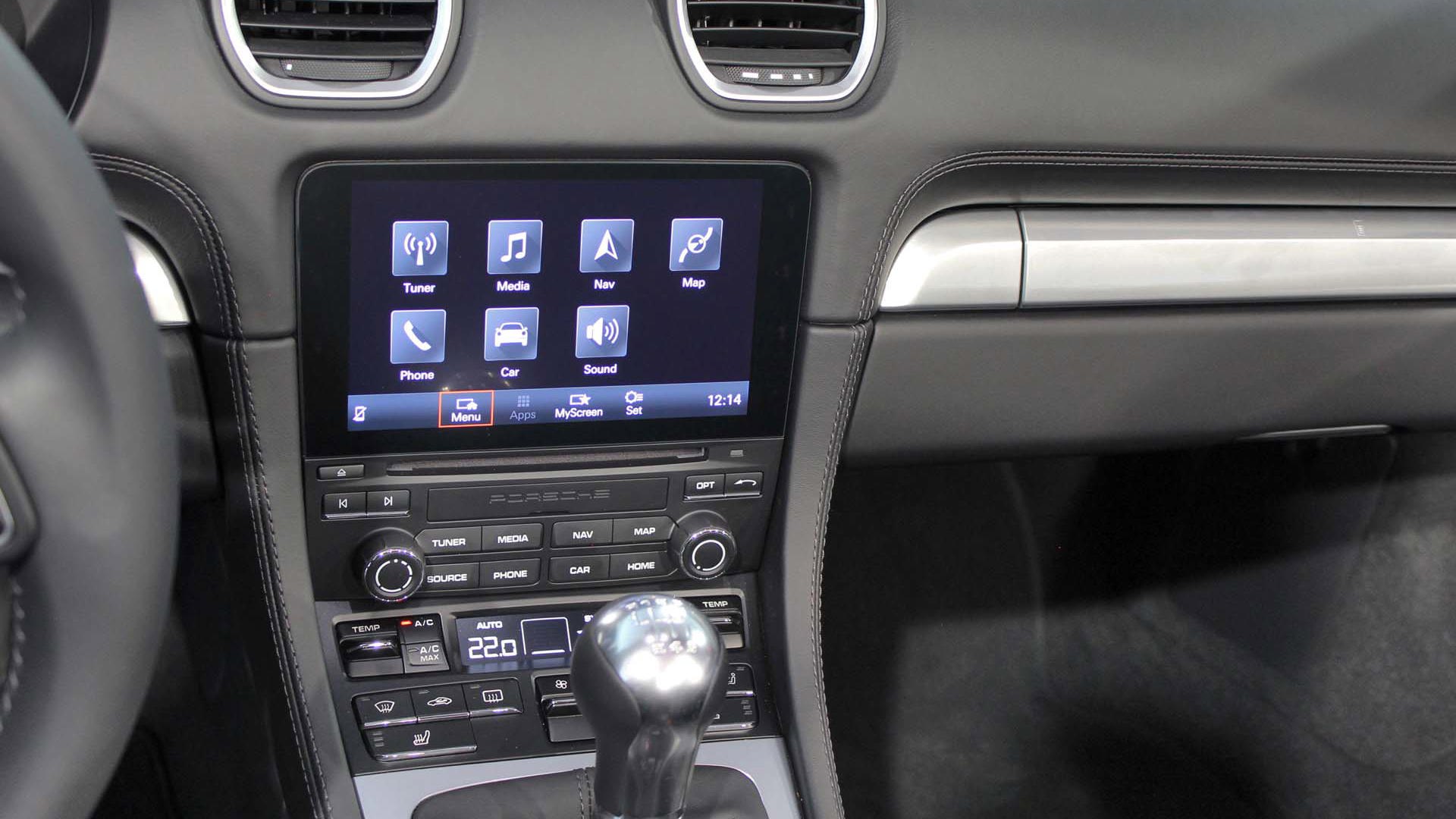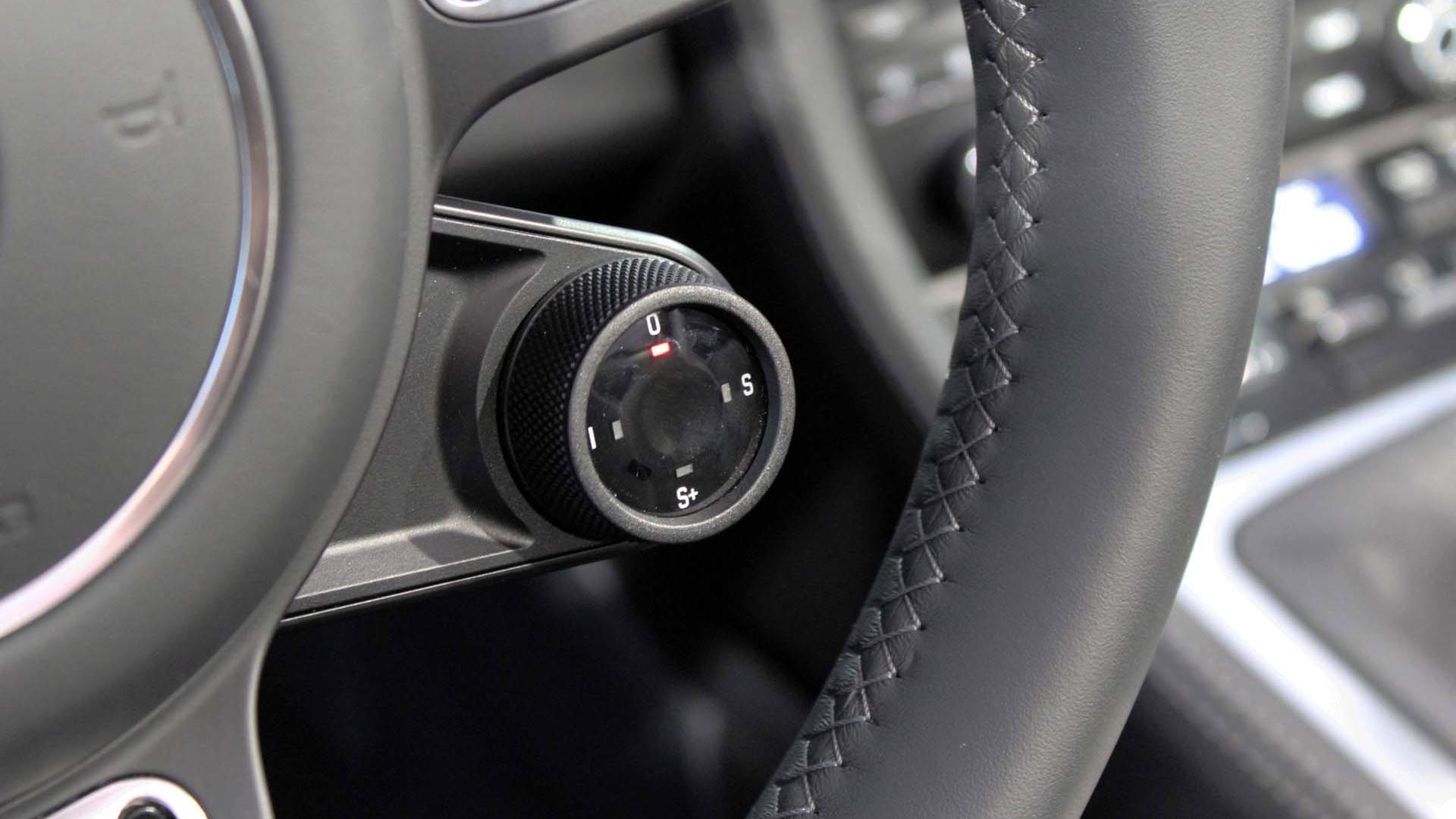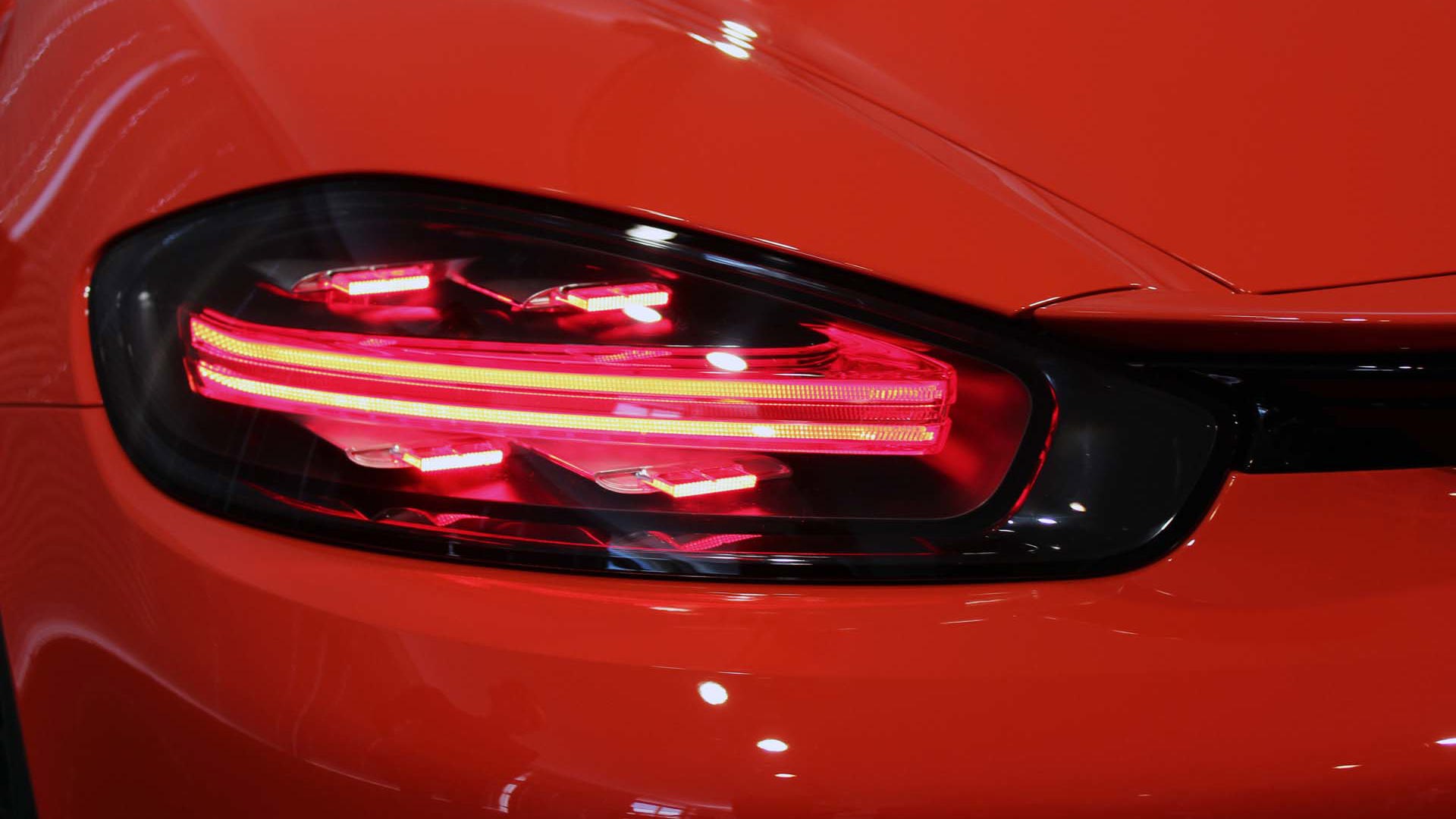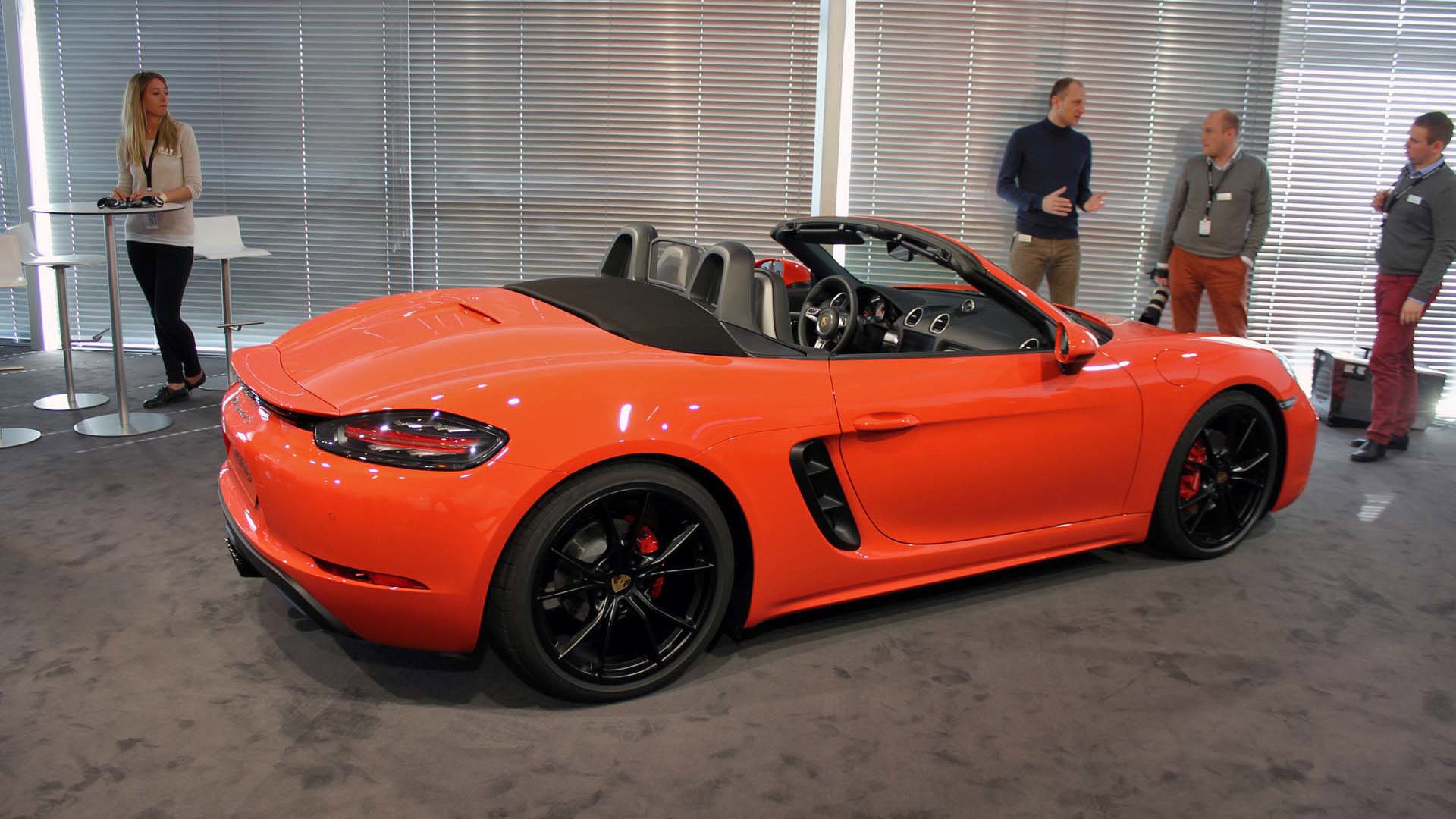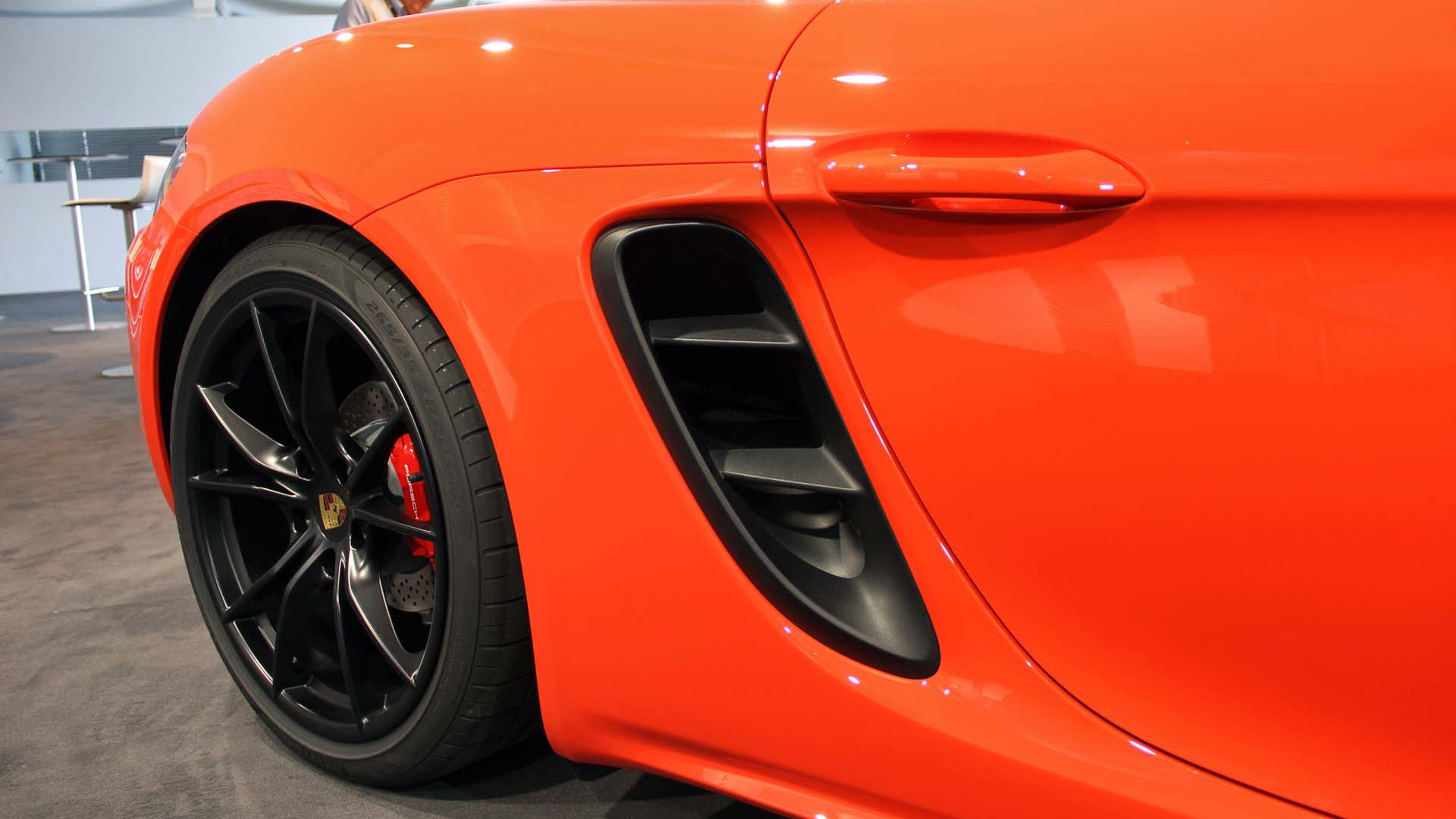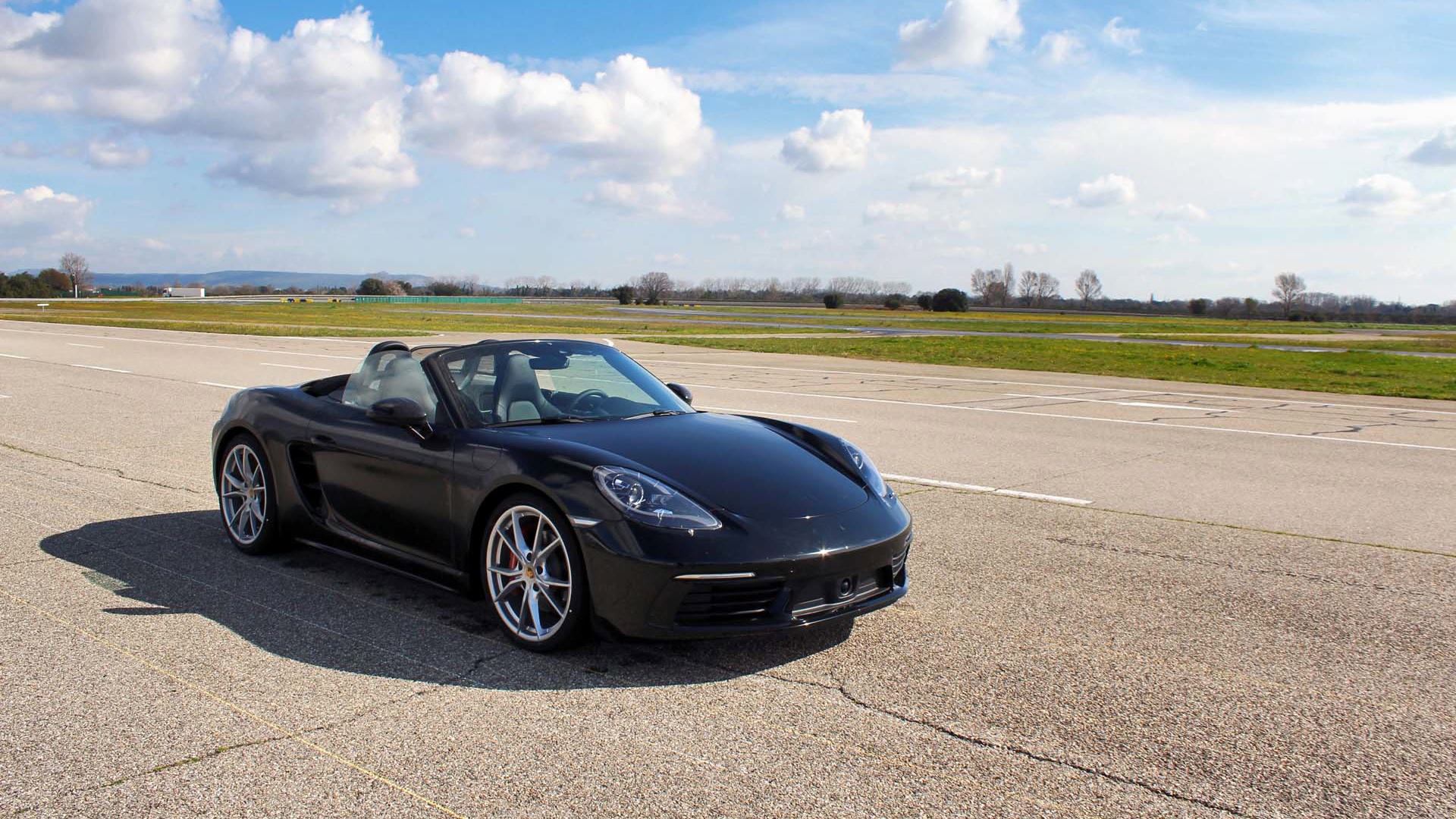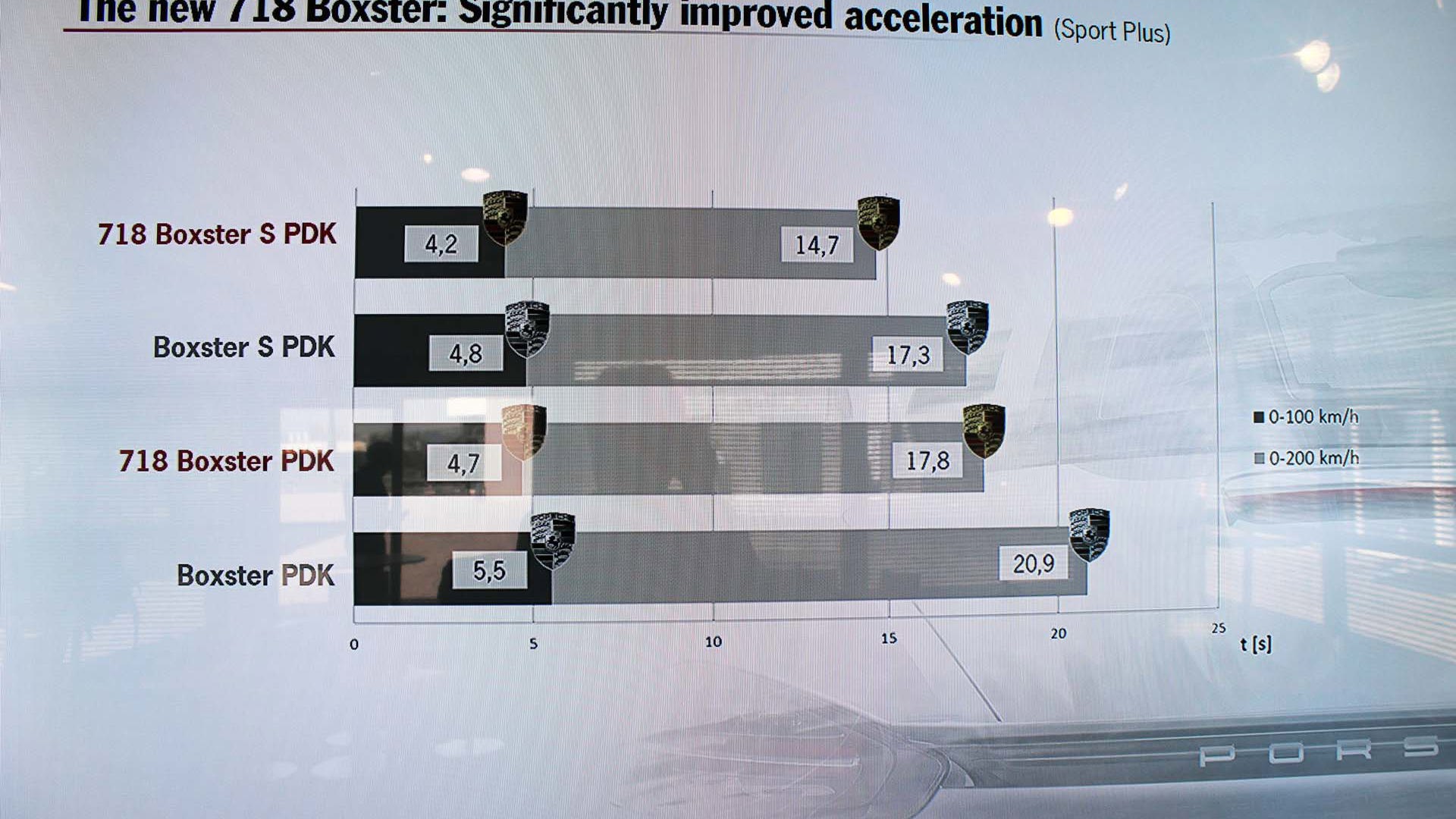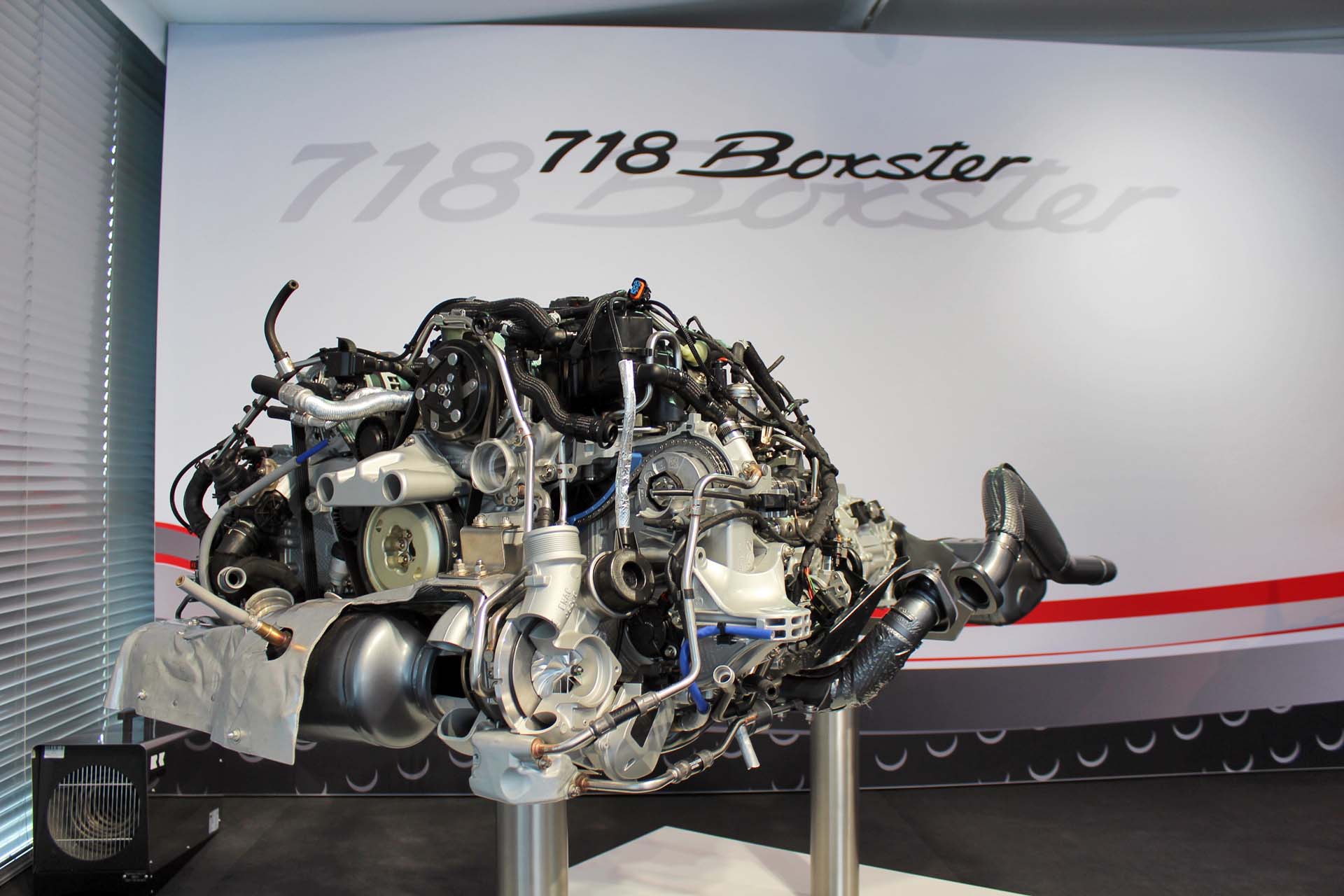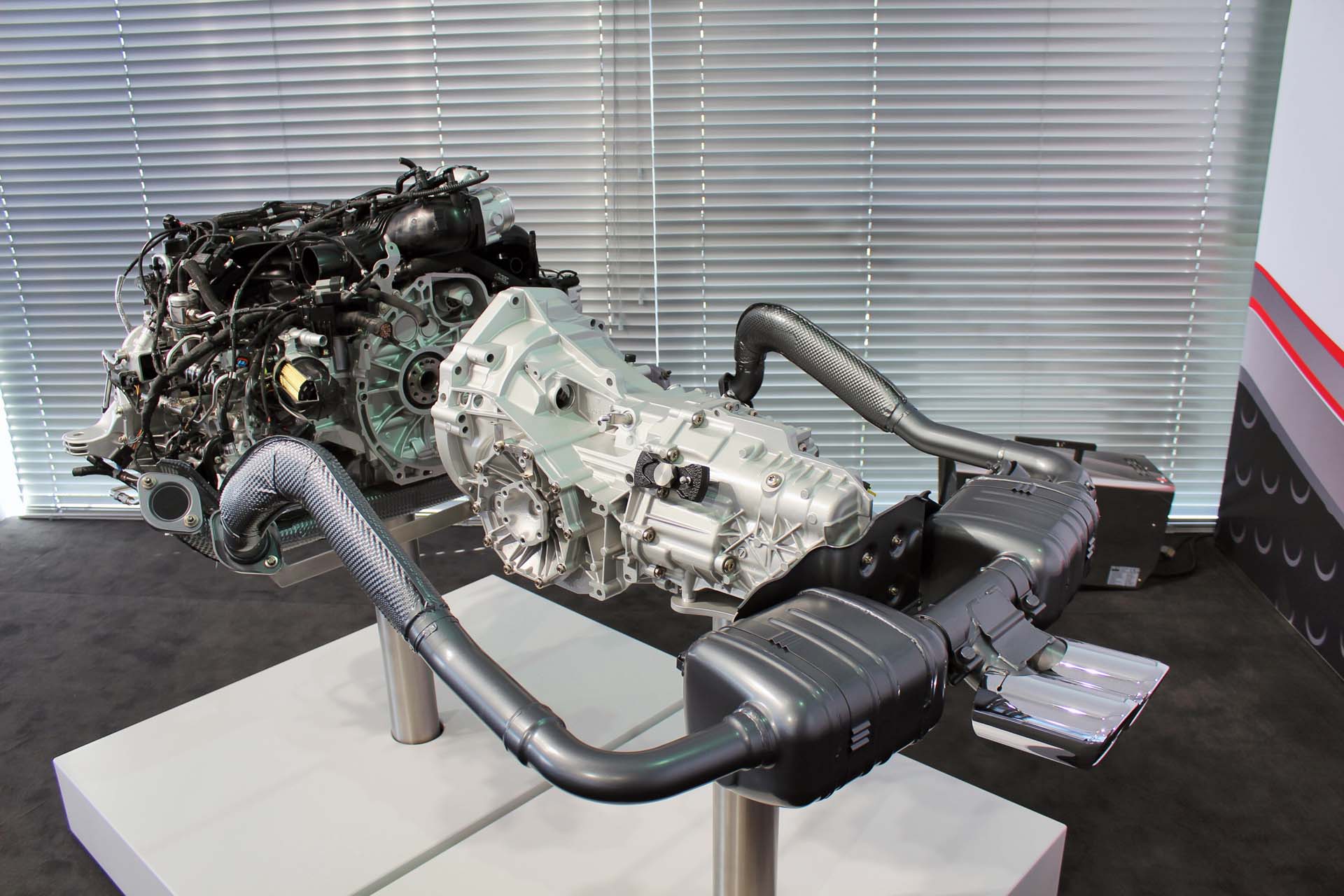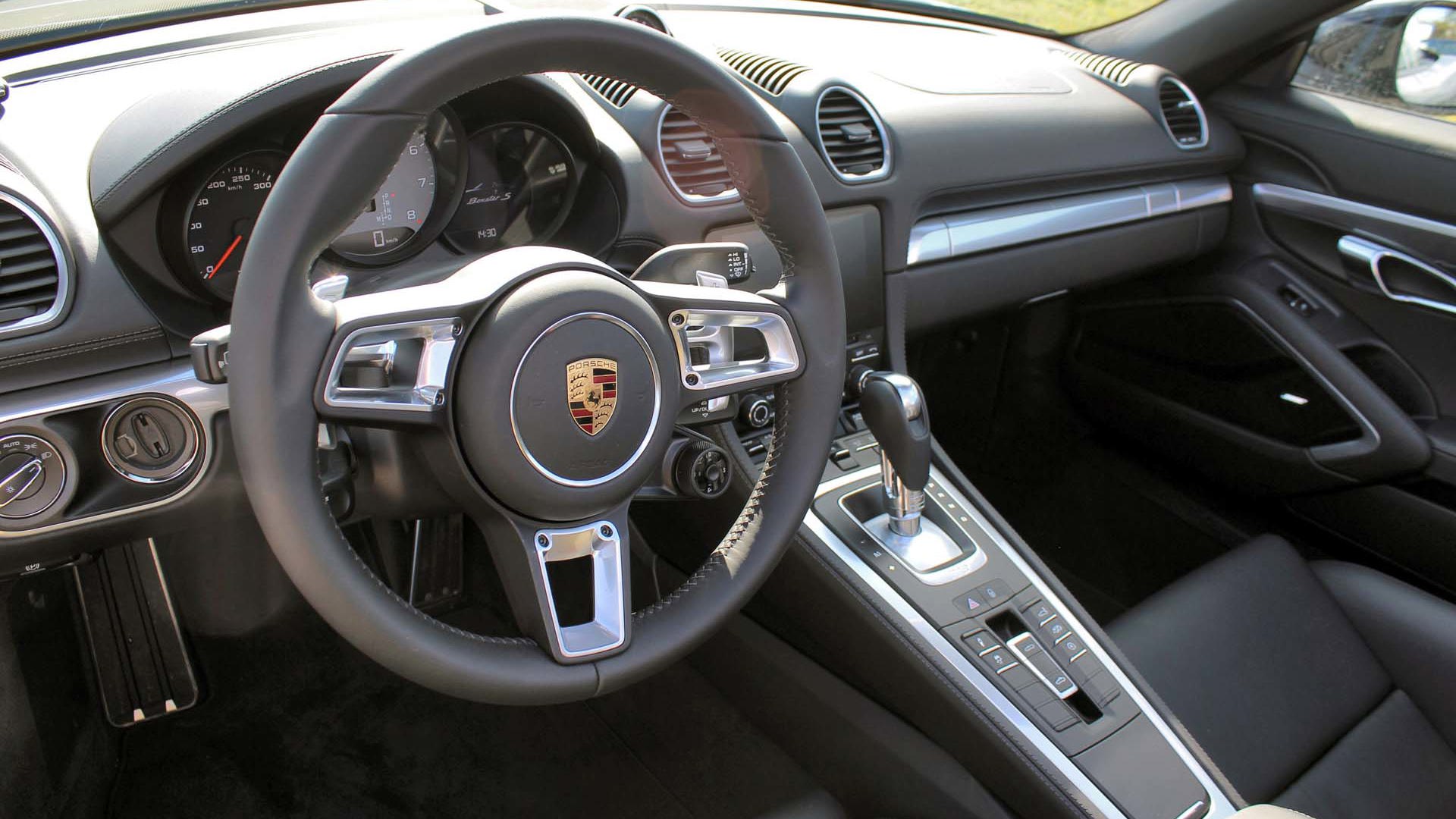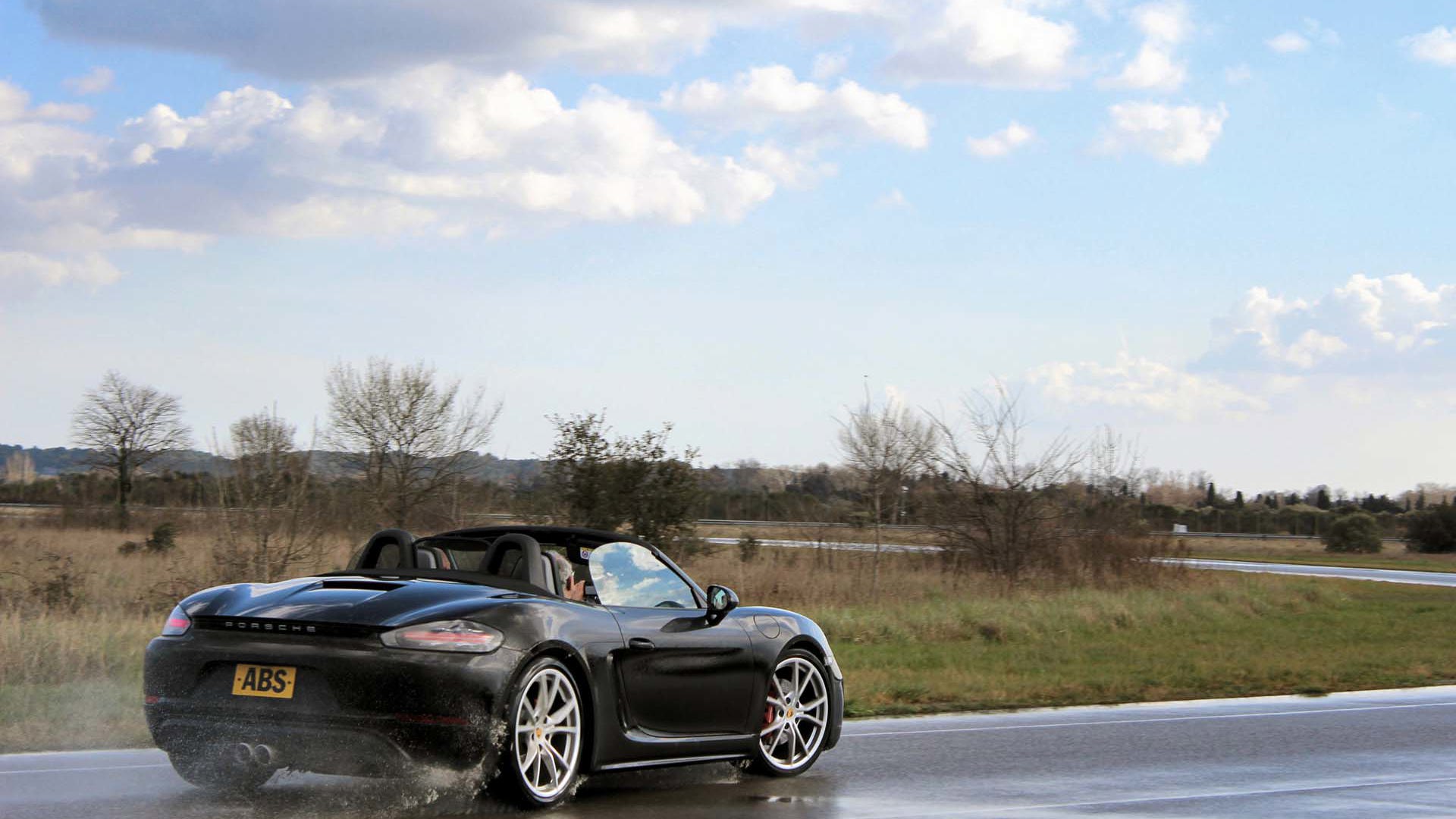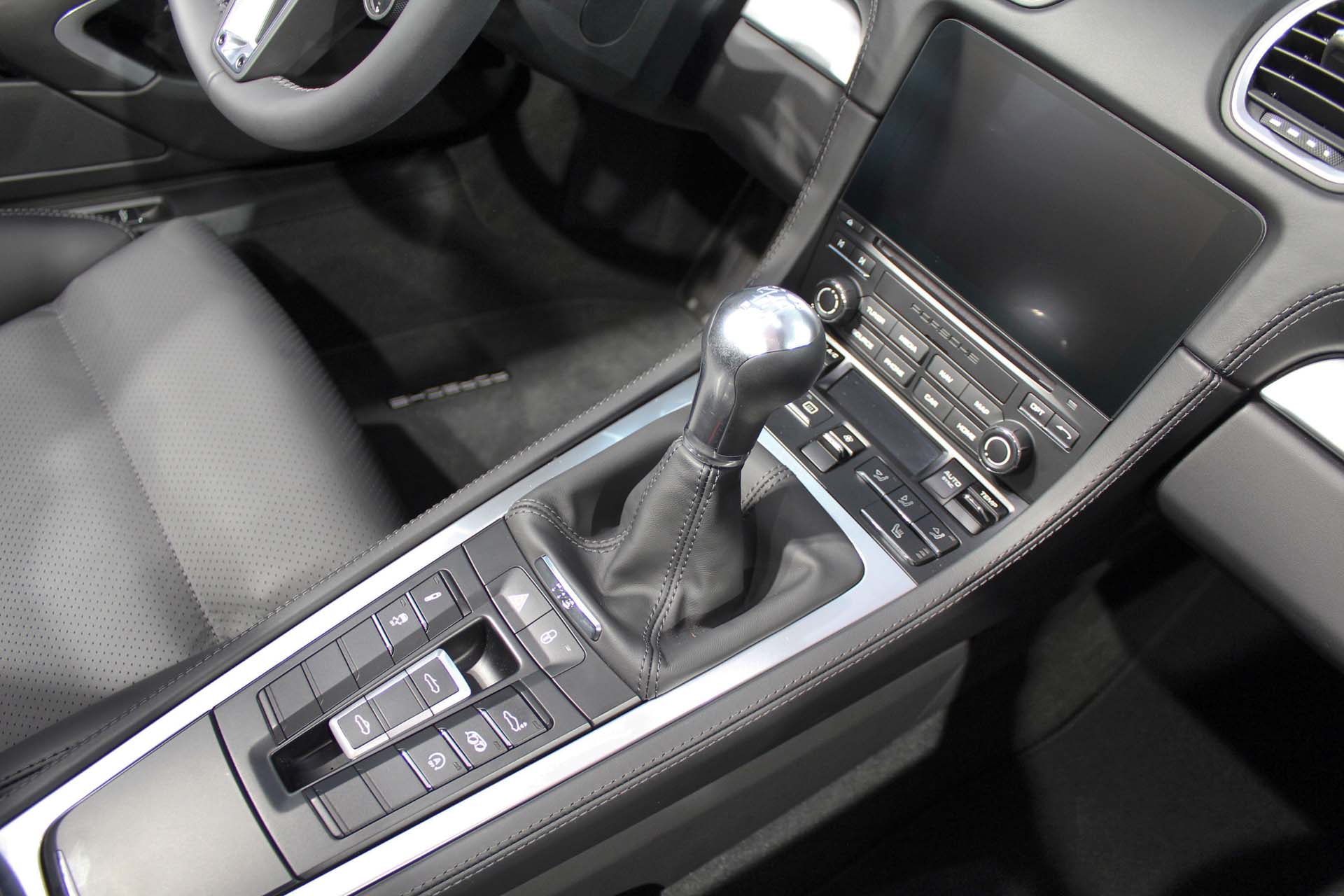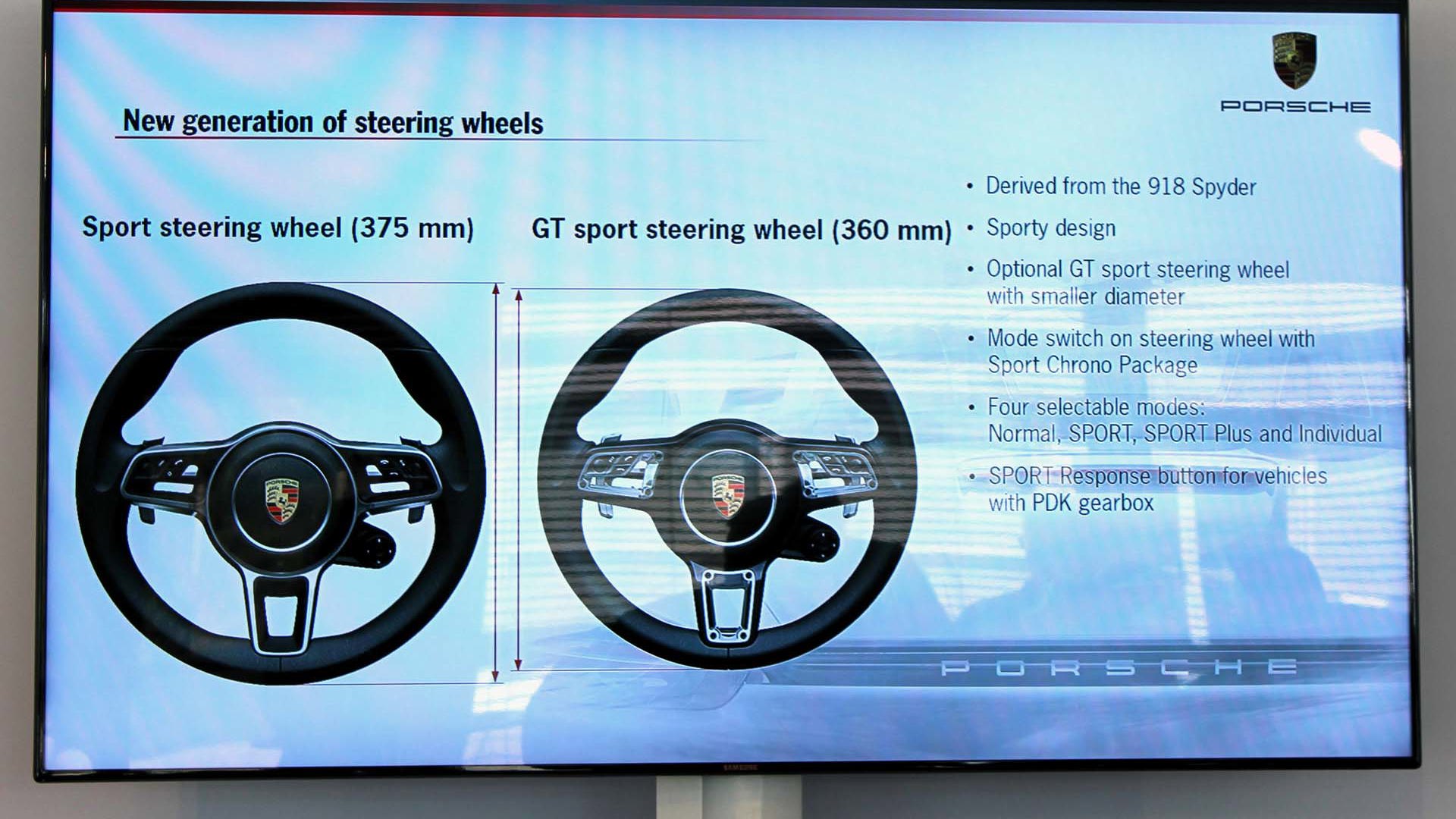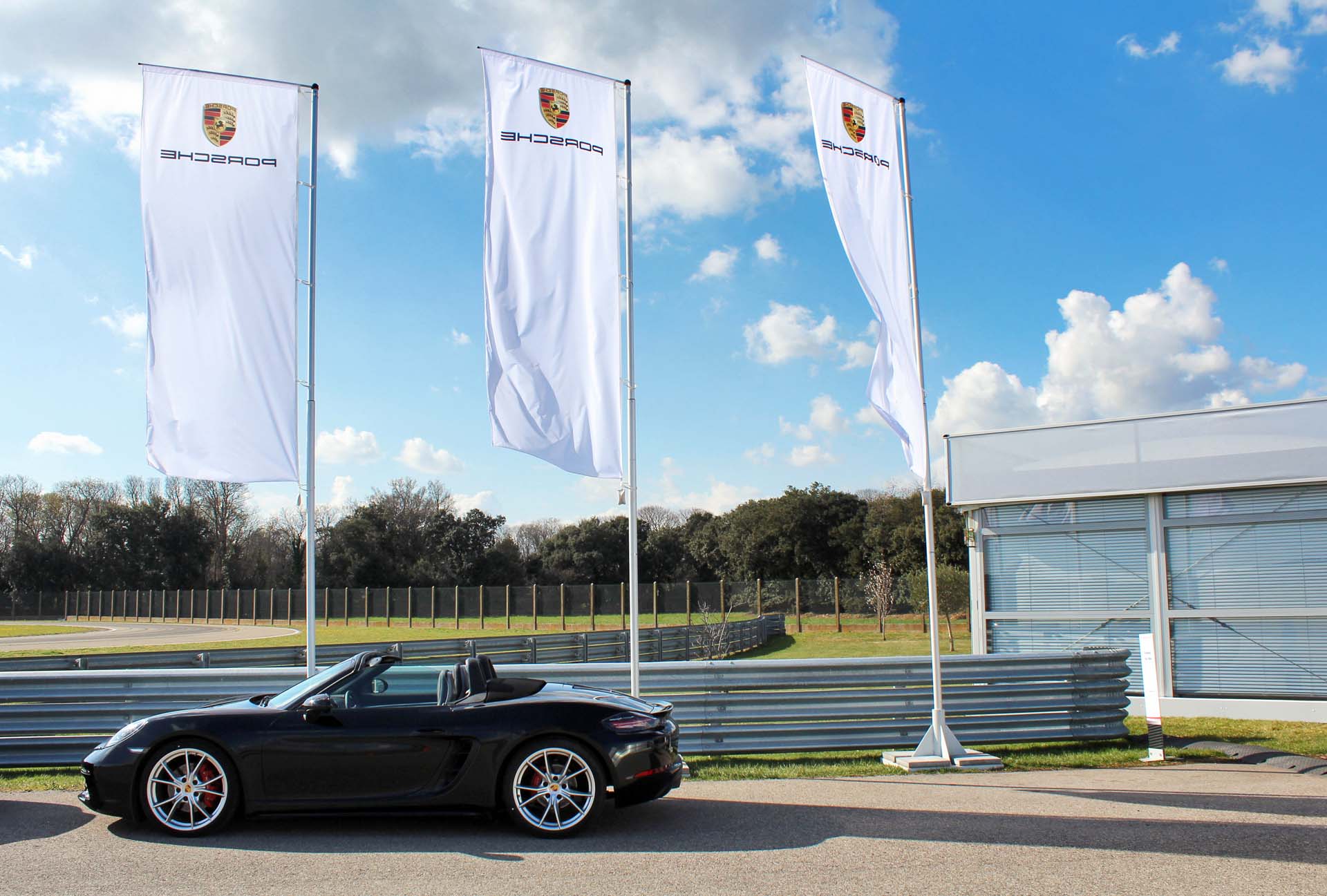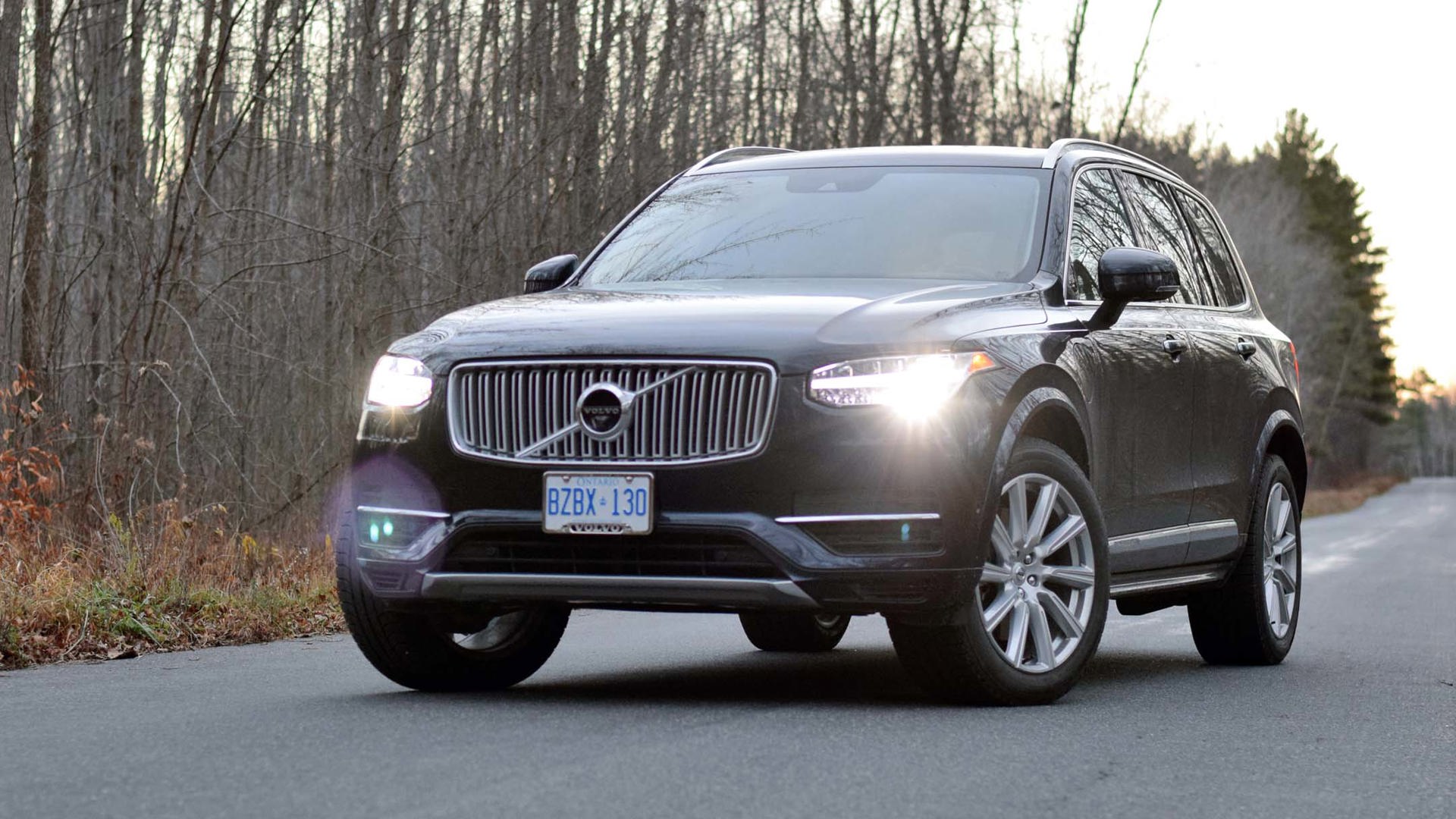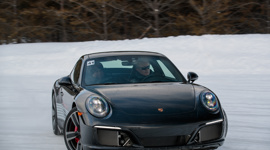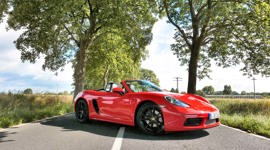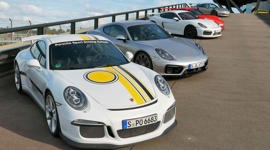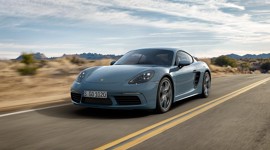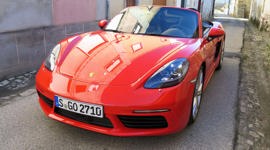Marseille, France - After 20 years of being powered by rev-hungry flat-six engines, Porsche’s mid-engine roadster, the beloved Boxster, makes a seismic conceptual shift. The 2017 718 Boxster and Boxster S, landing in Canada the third quarter of 2016, will be powered by turbocharged flat-four engines.
What’s that sound? Oh, that would be the Boxster-faithful pounding their fists and wailing to the Gods. The heavenly naturally-aspirated flat-six has pretty much been the defining element of this car – that and its poetic balance. Fear of this roadster’s emotional evisceration in the name of increased fuel economy and reduced emissions will without question be keeping the legions awake into the wee hours.
So Porsche brought us to a Michelin test track in the south of France with hopes of quelling those fears. Five preproduction 718 Boxsters awaited – four S models and one base car. Not to be driven by us, unfortunately, but to be experienced from the passenger seat with Porsche hot-shoes at the wheel.
13 percent
Don’t think a company like Porsche is going to frame the switch from six to four cylinders as a step backwards. By the numbers, this next-gen Boxster is better in every way. Faster, better handling, more comfortable, sporting modern connectivity and up to 13 percent more efficient. Sound? Well, nothing like the sixes, but distinctive and in-your-face nonetheless. Down an octave, these bellicose, baritone fours surely make a statement. The emotional experience appears intact.
$63,900
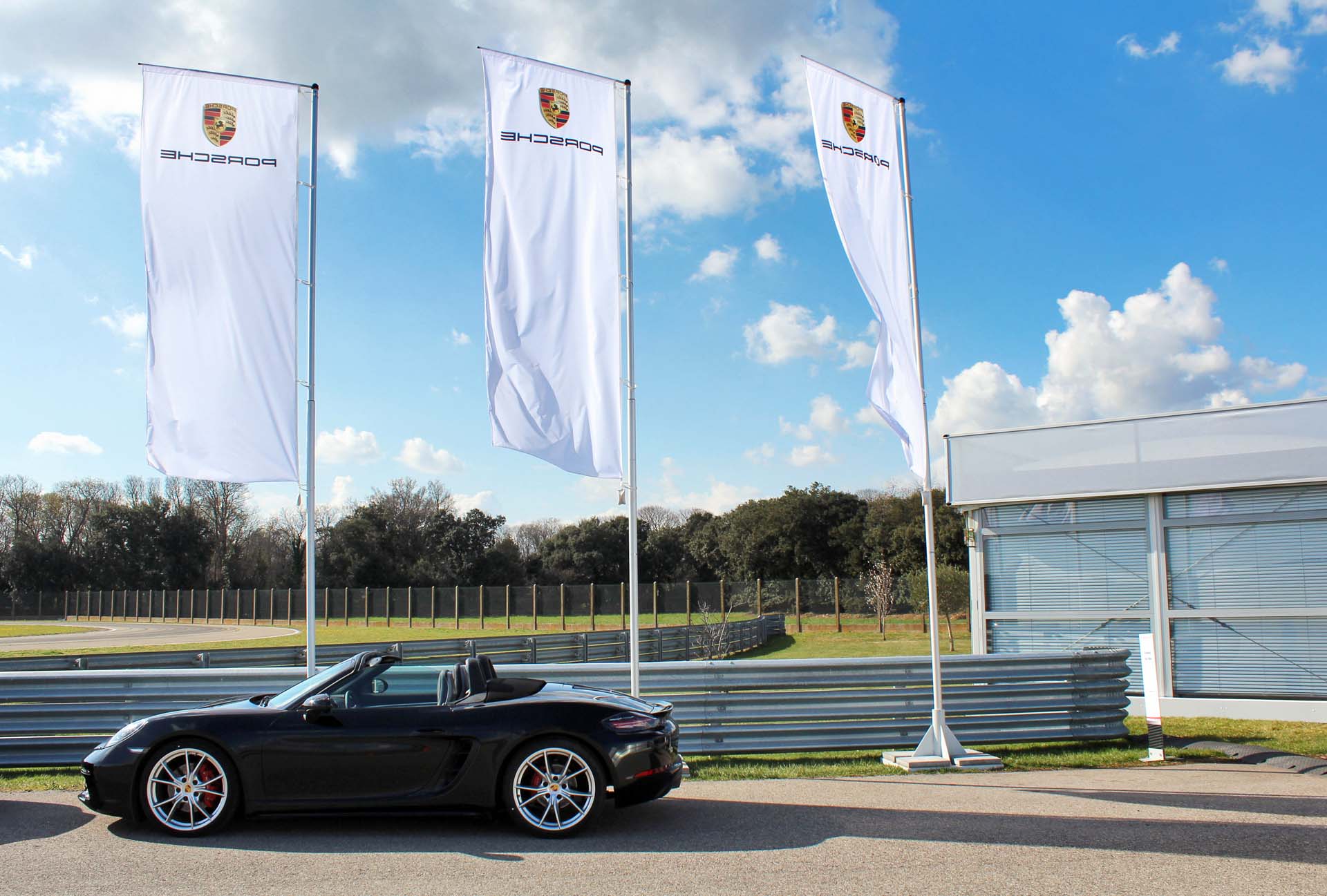
The base 2017 718 Boxster, with a starting price of $63,900, supplants the outgoing car’s 265 hp, 206 lb-ft atmo 2.7L flat six with an all-new 2.0L single-turbo four that makes 300 hp and 280 lb-ft. of twist from 1,950-4,500 rpm. That’s a jump of 35 horses and 74 lb-ft. While the old car was pretty soft on the bottom end and required some revs to find the pace, this 718 will have none of that. In fact, the seven-speed twin-clutch PDK-equipped base 718 Boxster beats last year’s PDK Boxster S to 100 km/h (4.7 sec vs 4.8).
350 hp
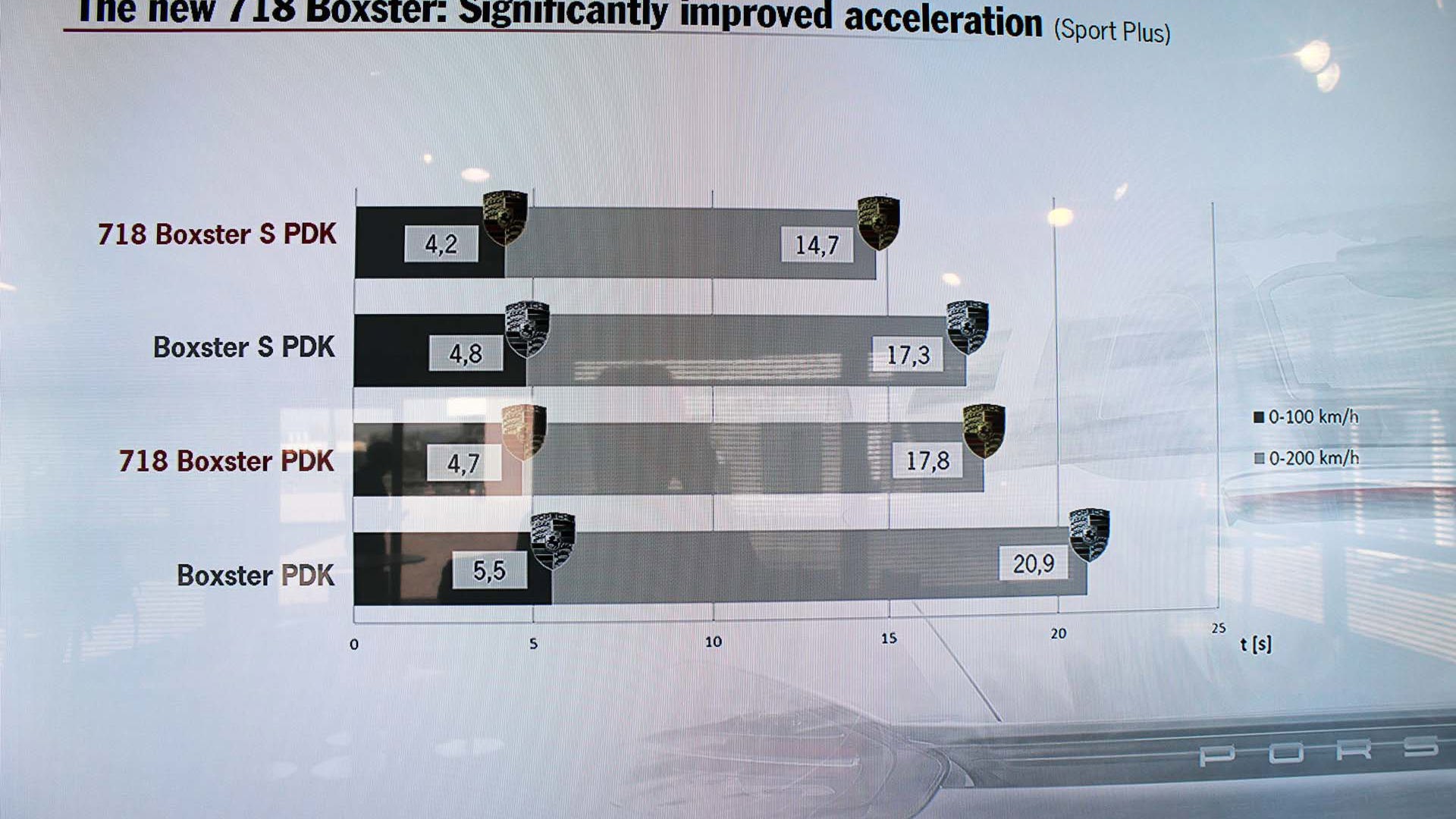
Move up to the $78,000 718 Boxster S and a bore increase nets 2.5L, 350 horsepower and 309 lb-ft, also on board from 1950-4500 rpm. This car, with PDK blows through 100 km/h in 4.2 seconds, and on to 200 km/h in 14.3 seconds (against 4.8 and 17.3 for the outgoing car).
Six
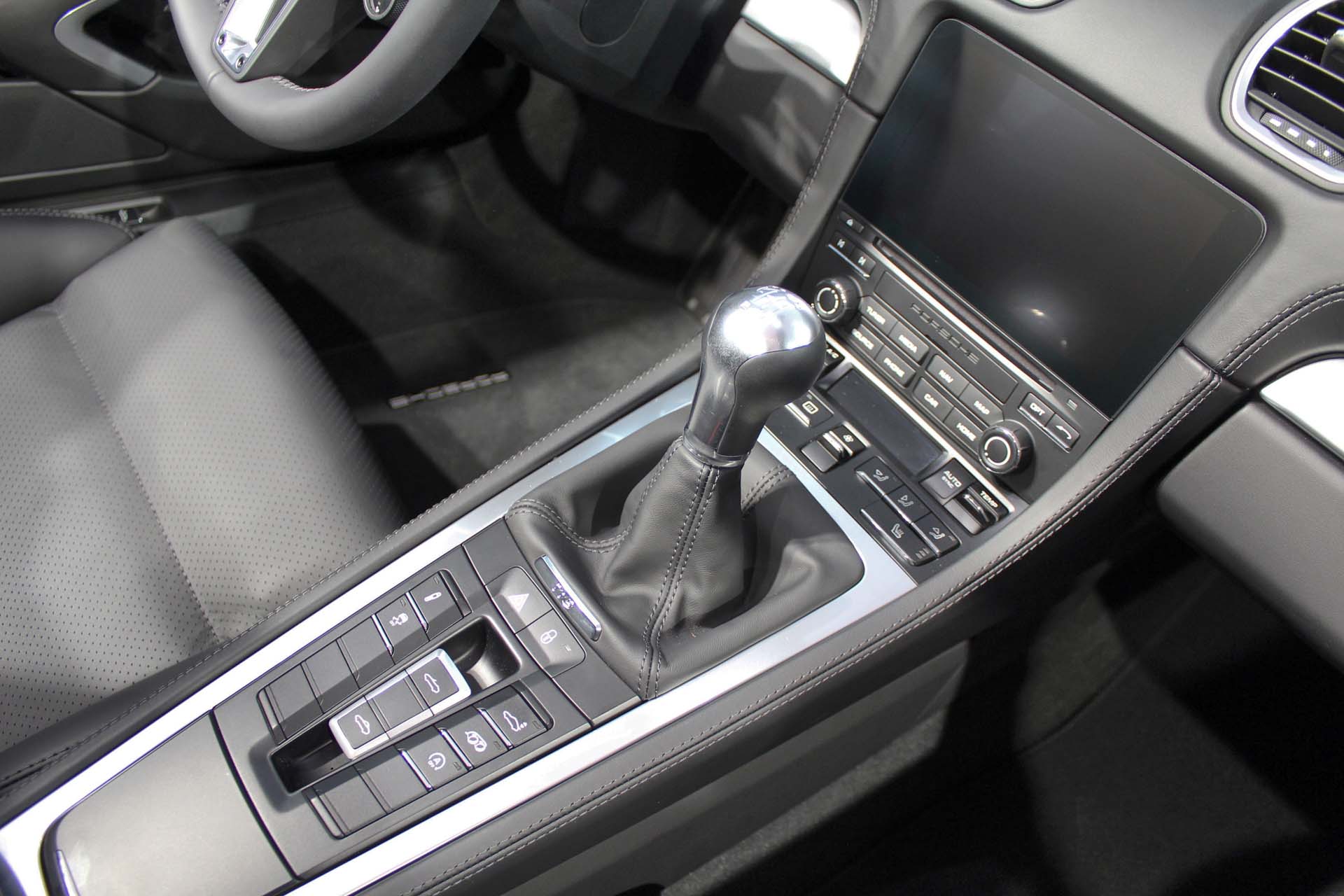
A six-speed manual transmission is standard kit for both cars – the seven-speed PDK runs $3660. The newfound urge was made clearly evident during a launch control start in a 718 S. No Boxster has ever made a hole-shot like this before.
B4
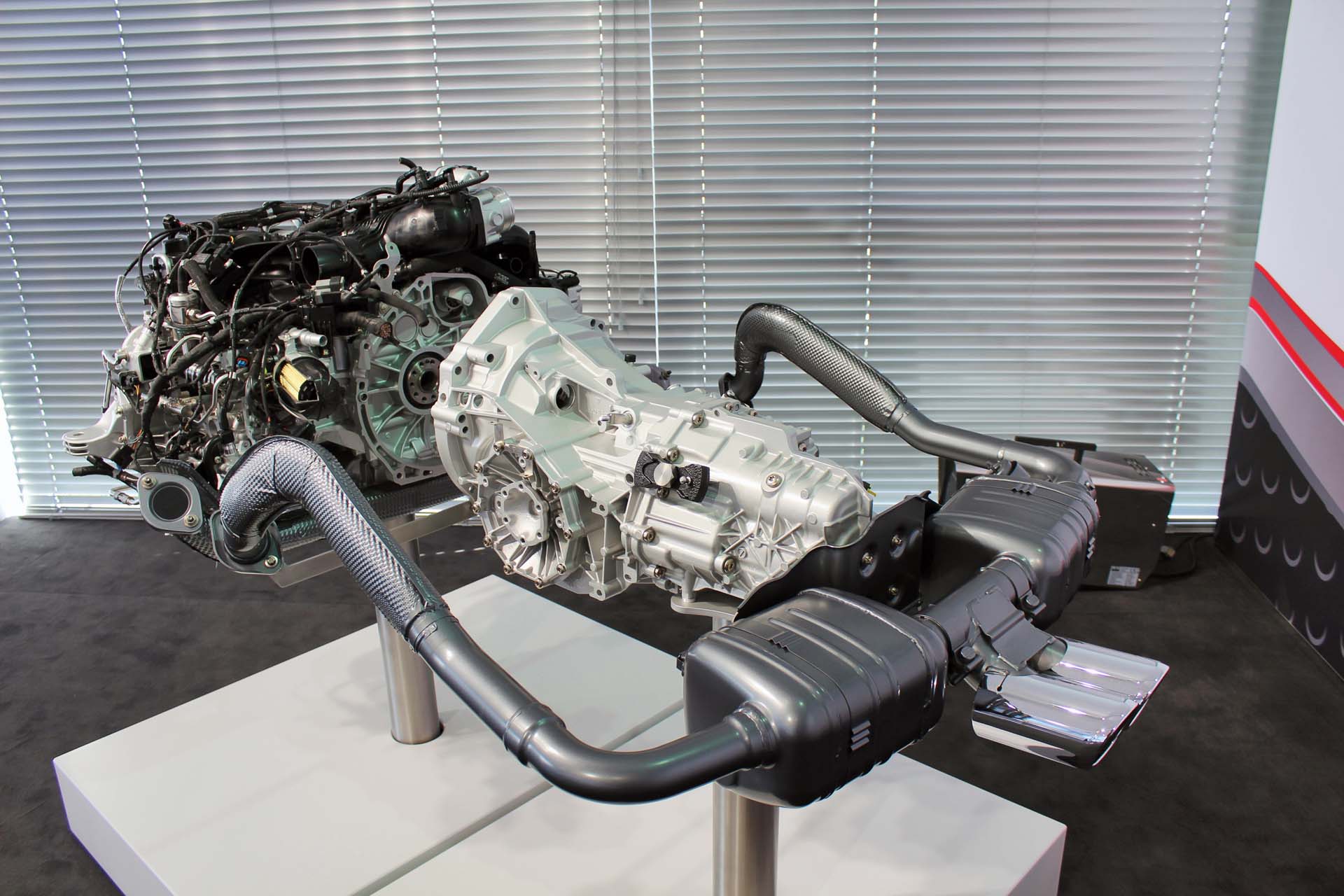
This single-turbo flat four, dubbed B4, is directly related to the all-new B6 twin-turbo 3.0L flat six found in 2017 Porsche 911. It shares architecture, technology and a number of parts, including the alternator, HVAC compressor, main bearings, fuel injectors, fuel pump, vacuum pump, camshaft bearings, intake valves (on the 2.0L, the 2.5L uses larger-diameter valves), camshaft-phasing mechanism, connecting rods, piston rings, and timing chain.
Zero Waste
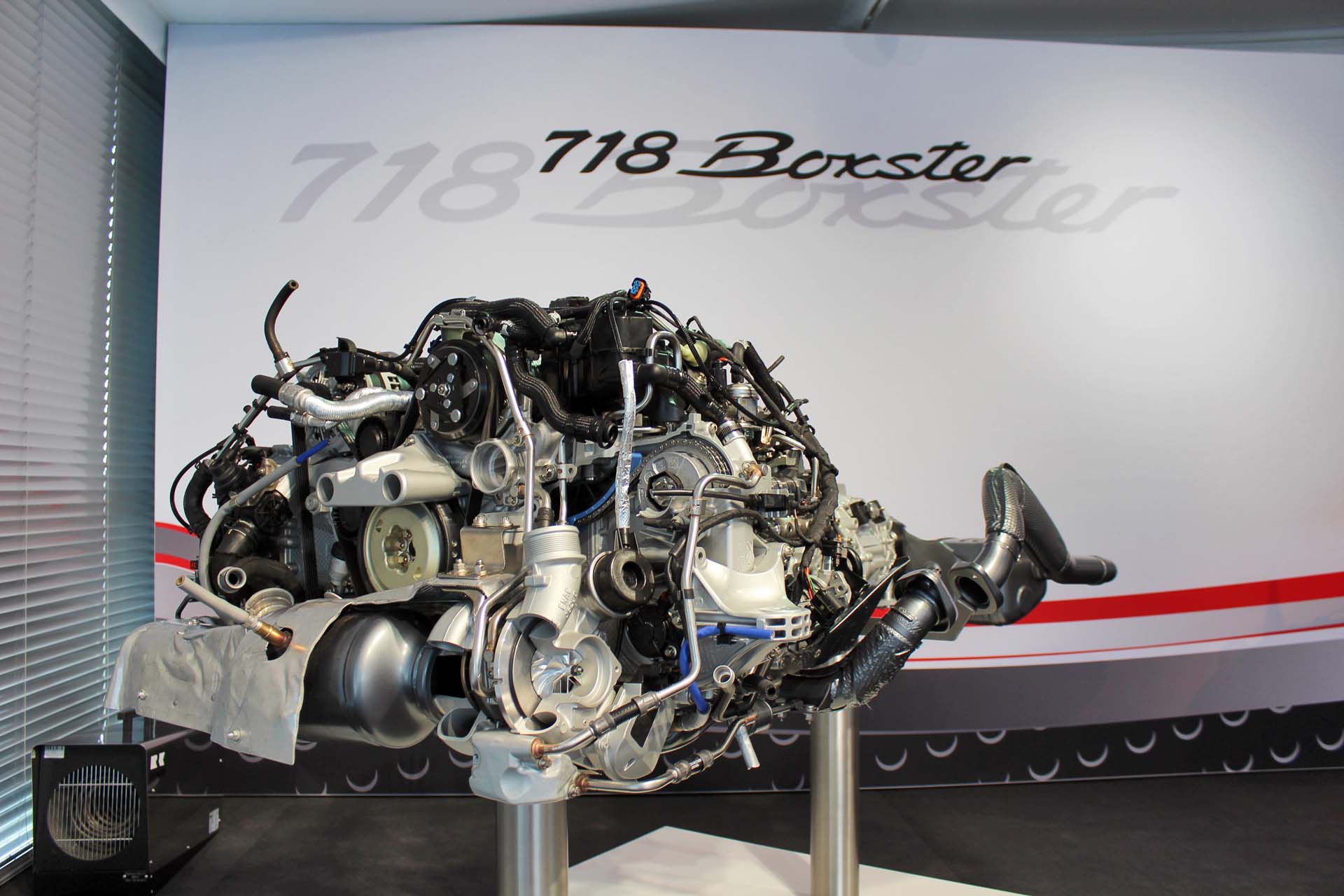
An air-to-liquid intercooler atop the engine cools the intake charge. While the 2.5L S runs a lower boost pressure that the 2.0L base engine, it benefits from variable vane turbo technology. At lower engine speeds, small adjustable vanes in the exhaust track just before the turbo act like a tiny venetian blind, partially closing to increase the exhaust gas flow rate, spinning the turbo up sooner. At high engine speeds they open up, allowing for max high-end power. Further to creating a more linear throttle response, when lifting off the throttle briefly stays open, timing is retarded, fuel is cut and the wastegate closed, essentially pumping air through to the turbo to keep it spinning.
7,500 rpm
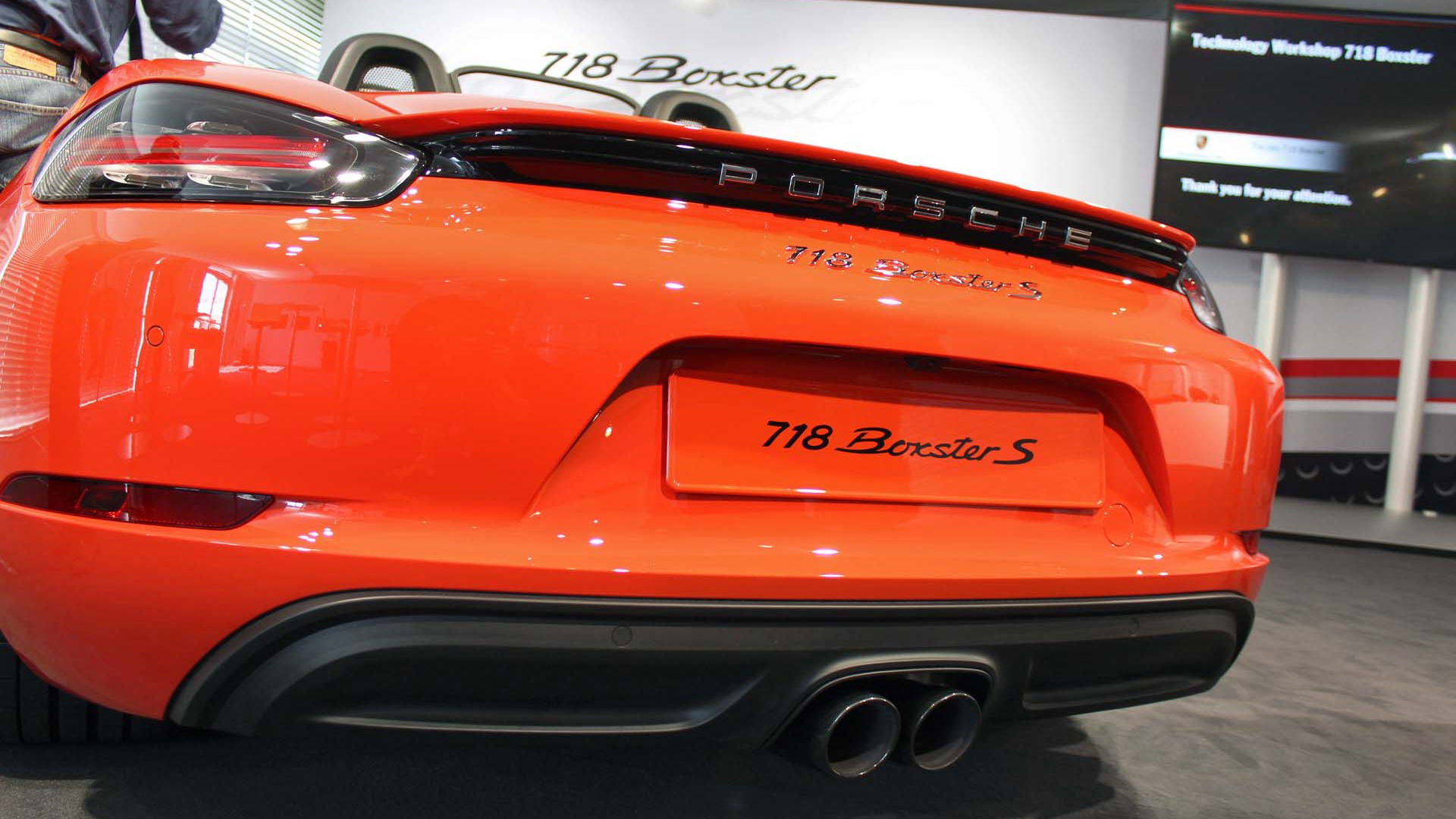
Porsche wanted to retain the high-revving nature of the old flat-sixes with these turbo fours, and have largely succeeded as they’ll spin to 7,500 rpm, about 300 rpm shy of the six-pots. Helping in this matter is a modified valve train with reduced mass components. These engines also get VarioCam Plus variable valve lift on both intake and exhaust sides.
Speaking of exhaust, Porsche spent a lot of time bringing emotion into the exhaust note – no easy feat with a turbocharged engine as those little turbines tend to stifle the aural mojo. A dual-mode sport exhaust system is available on both cars. Get it. If equipped with the Sports Chrono Package ($2,200), the middle Sport mode lets more fuel through when lifting the throttle, allowing for some delightful blats, pops and farts on overrun. Danke.
8, 5 and 15 kg
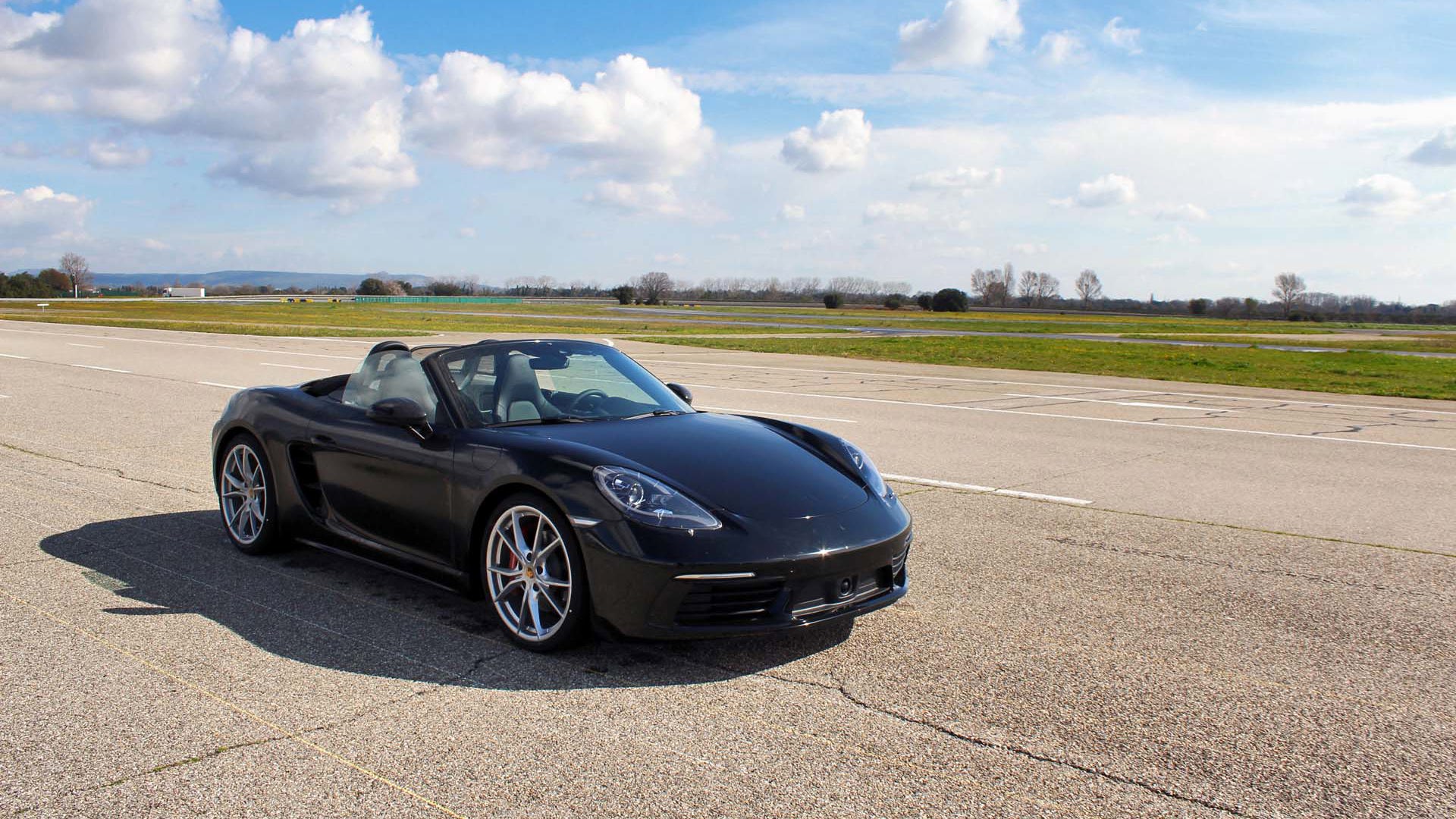
Very little weight savings here – the turbo fours are only about 8 kilos lighter than the six-cylinder engines they replace. Factor in more standard equipment, bigger wheels, bigger brakes, larger half-shafts and rear shocks, plus some extra bracing and the 718 Boxster and 718 Boxster S come in 5 kg and 15 kg, respectively, over the outgoing cars.
20 Inches
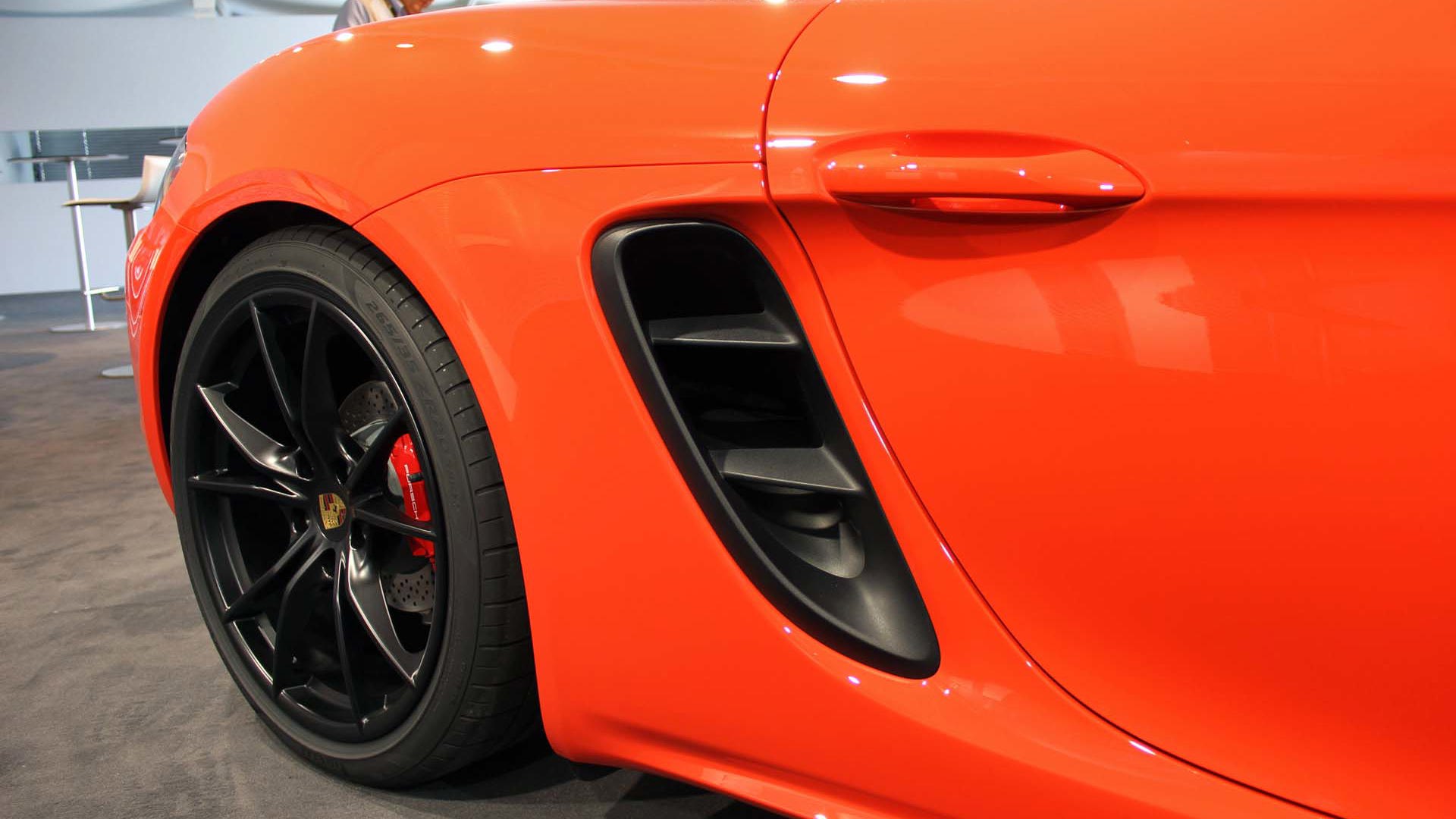
More go requires more whoa. The 718 Boxster gets brakes from last year’s Boxster S, and the new S inherits some stopping hardware from the Carrera. Carbon ceramic brakes are on the menu for $8,450. Wheels are up in size, ranging from 18 to 20 inches.
Five Seconds
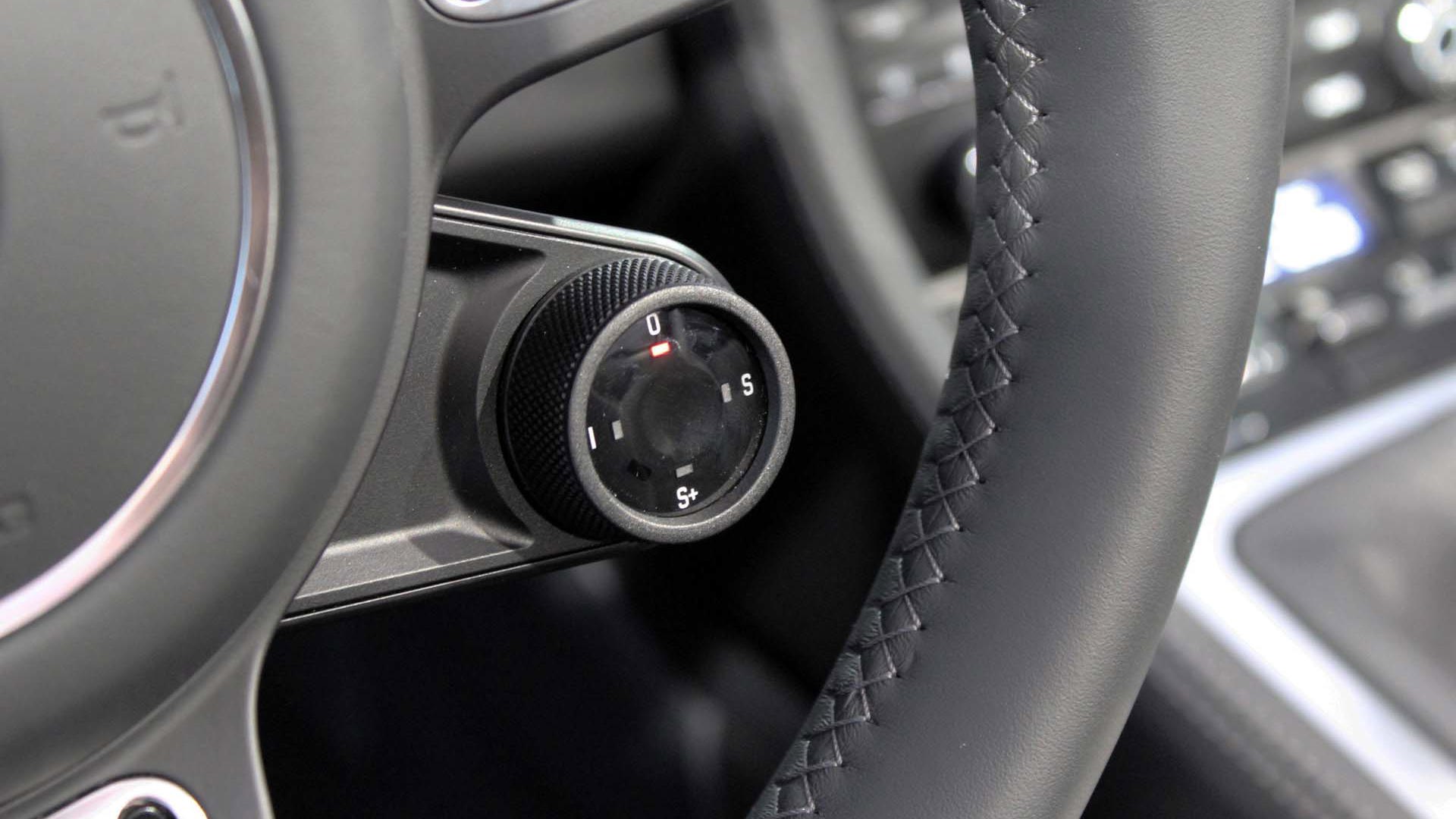
Porsche Stability Management (PSM) gets tweaked. A short press on the console-mounted button calls up Sport more, which has been recalibrated to allow more sideways fun before jumping in to save the proverbial bacon. Sideways was the word of the day, as my Porsche pilot held the bellowing 718 Boxster S in long, lurid drifts over a watered section of the test track. A long, five-second press on the PSM button turns everything off, and that’s when my German friend, who is a chassis development driver on the 718 project, let it all hang out… literally. From my perspective, the new-found low end torque of the 718 allows the arse to kick sideways like never before. A ten percent quicker steering ratio makes for quicker response.
20mm
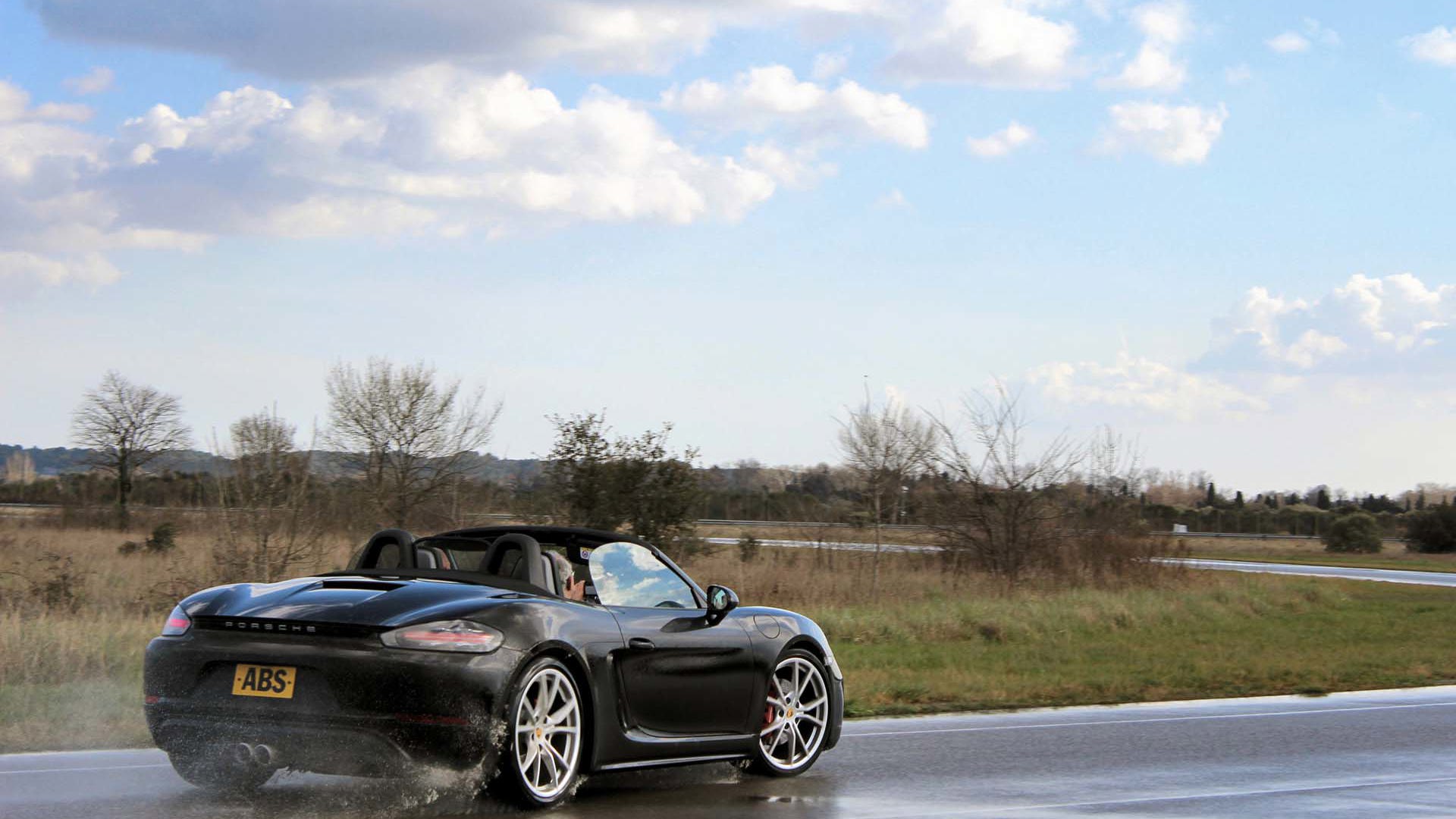
Two adaptive suspension systems are available: PASM which costs $2,050 and is 10 mm lower than standard and the $2,370 PASM Sport Suspension which is 20 mm lower. Both have been retuned to offer a greater spreads between comfort and sport. These cars were fitted with the PASM Sport Suspension. As we flew around the banked oval, my driver noted the car’s new high speed stability. I noted the g-forces distorting my face into gargoyle territory.
Only the hood, windshield, roof and rear decklid carry over from the previous generation Boxster – all other body panels are new. The remake is subtle but effective. The 718 looks more rakish, planted and purposeful. The front fenders are more pronounced, the nose appears lower and wider, the side air intakes are larger, and the back gets new four-point LED taillights connected by a black bar and a small spoiler. Improvements to the interior include new design steering wheels, resculpted dash and Porsche’s new infotainment system with larger touchscreen.
7m42s
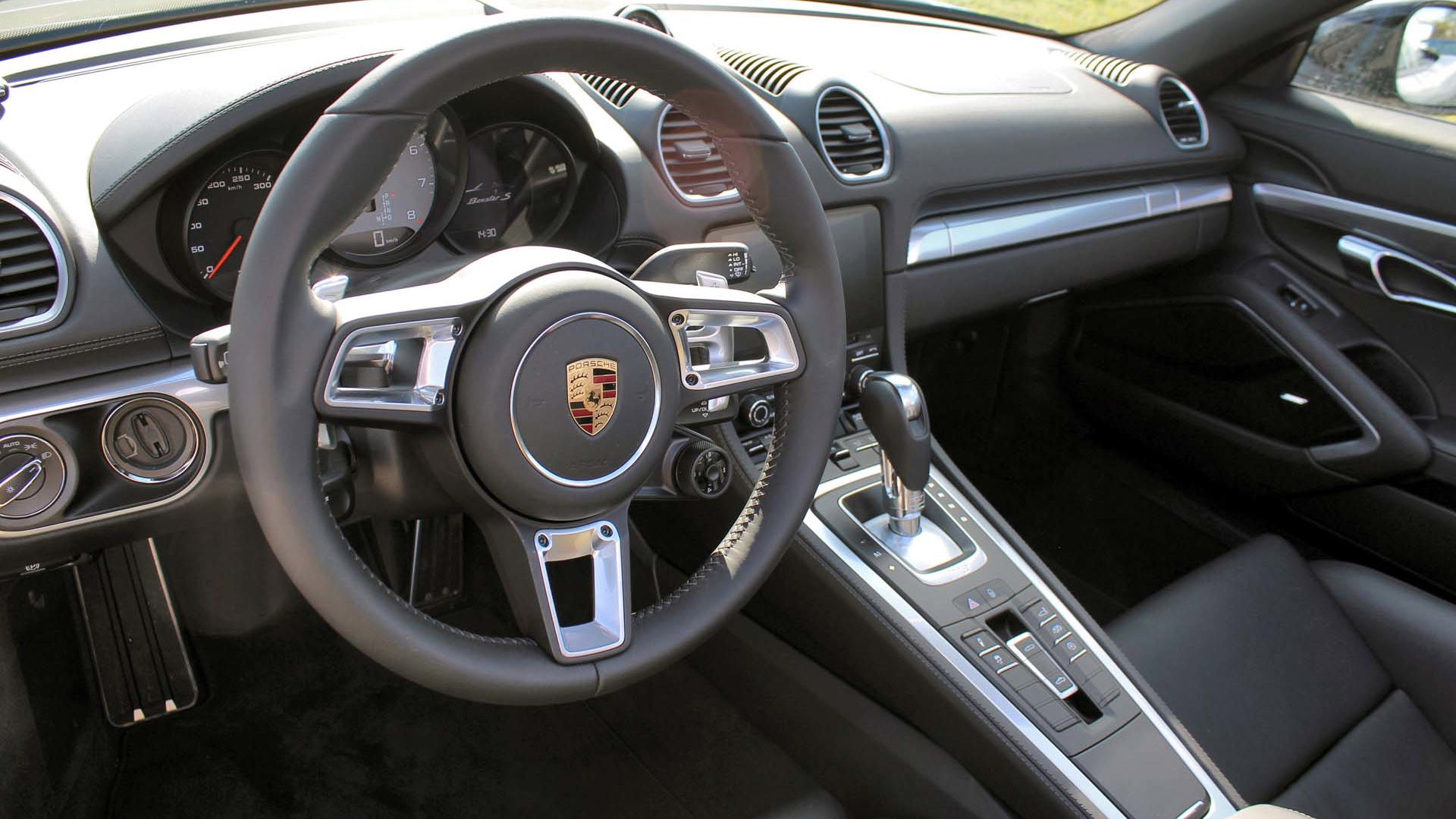
Until we get behind the wheel and see how this reimagined 718 Boxster feels, the jury is still out. But barely. By the numbers, it kicks the old car squarely in the tailpipe. Most telling would be the PDK-equipped 2017 718 Boxster S’s Nurburgring time of 7 min and 42 seconds, which eclipses the old car by an astounding 16 seconds.
